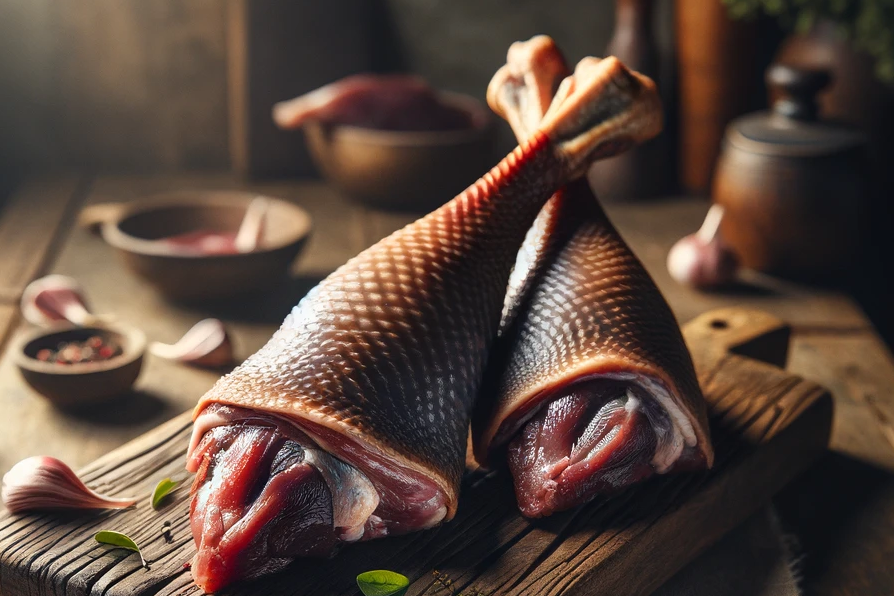Turkey thigh
In the world of dog nutrition, there are constantly new trends and recommendations that dog owners must navigate. One of the items that is often up for debate is the use of turkey legs in our four-legged friends' diets. This article sheds light on what turkey legs really are and examines the pros and cons of including them in your dog's diet.
What are turkey legs?
Turkey thighs come from the lower part of the legs of the turkey, a bird known for its tasty meat. These thighs consist of darker meat compared to the breast and contain both muscle and connective tissue. They provide a rich source of protein, vitamins and minerals that can be beneficial to a dog's diet. However, as with any type of meat, there are aspects to consider.
Benefits of turkey thighs for dogs
High quality protein source
Turkey thighs are an excellent source of protein, which is essential for building and repairing muscle tissue in dogs. Protein also plays an important role in the immune system and helps in the production of hormones and enzymes.
Rich in important nutrients
These thighs contain important vitamins such as B vitamins, which are important for energy production, and minerals such as zinc and iron, which help support the immune system and blood formation.
Omega-3 fatty acids
Although turkey thighs don't have the highest concentration of omega-3 fatty acids, they still contain a remarkable amount that can help support skin and coat health as well as reduce inflammation.
Disadvantages of turkey thighs for dogs
Bone and risk of splintering
The biggest concern with feeding turkey thighs is the risk of bones splintering when cooked. Such splinters can cause injury to the throat, stomach or intestinal tract.
High fat content
Turkey thighs have a higher fat content than breast meat, which can be problematic for some dogs, especially those who are prone to obesity or have pancreatic disease.
Method of preparation
The way turkey thighs are prepared can also be a disadvantage. Spices, onions, garlic and other ingredients that are toxic to dogs, which are often used when cooking turkey thighs, should be avoided.
A balanced approach
As with any food in your dog's diet, moderation is key. Turkey thighs can be a nutrient-rich addition to a balanced diet when prepared properly and given in moderation. It is important to choose raw or properly cooked turkey thighs without bones and without harmful spices.
If you notice any signs of hypersensitivity or poisoning in your dog, you should see your vet immediately. We are not a substitute for a vet, but we try to be as accurate as possible. Every dog reacts differently and we recommend you get a second opinion or consult your vet if in doubt.
Stay healthy and take good care of your four-legged friend!😊
Similar to Turkey thigh
Duck legs are the legs of the duck, a dark meat known for its rich flavor and juicy texture. Compared to breast meat, it contains more fat and connective tissue, making it an excellent source of...
Goose legs are the lower parts of the legs of a goose, which are rich in meat and are often prepared by roasting, braising or other cooking methods. They are known for their dark, juicy meat and...
Chicken thigh is a part of the chicken leg that consists of the thigh bone and the adjacent meat. Chicken thigh is rich in protein, iron, zinc and vitamin B12. It also contains fat, cholesterol and...
Pigeon legs, as the name suggests, come from the lower limbs of the pigeon. They are characterized by their dark, tender meat, which is a rich source of various nutrients. Unlike white poultry meat...



